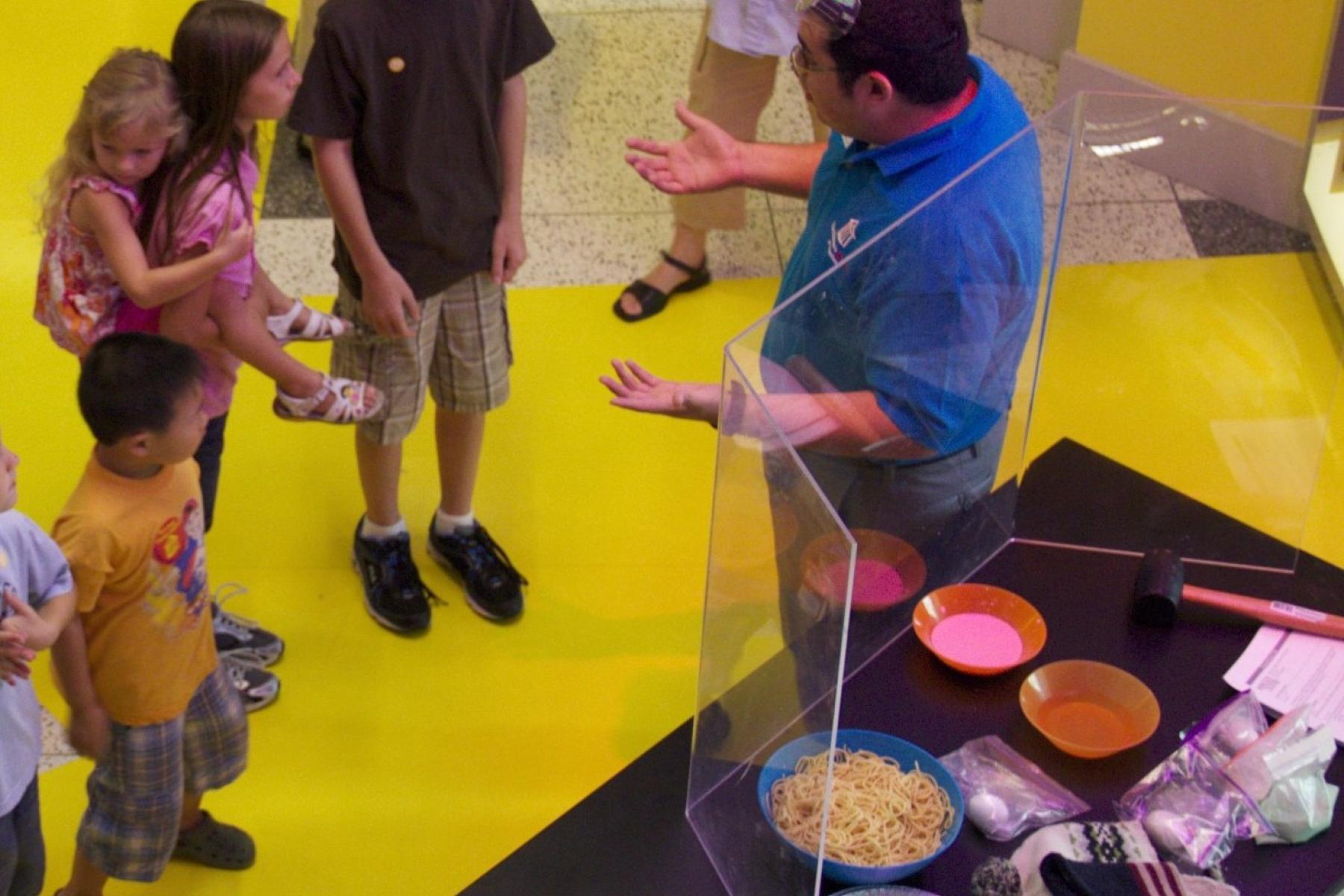DESCRIPTION
Visitors will learn how nanotechnology is being used to create new types of protective fabrics. The classic experiment "Oobleck" is used to demonstrate how scientists are using similar techniques to recreate this phenomenon in flexible fabrics.
DESCRIPTION
Visitors will learn how nanotechnology is being used to create new types of protective fabrics. The classic experiment "Oobleck" is used to demonstrate how scientists are using similar techniques to recreate this phenomenon in flexible fabrics.
TRAINING VIDEOS
OBJECTIVES
BIG IDEA
Nanotechnology can be used to create new protective fabrics with unique properties.
LEARNING GOALS
1. Explore and learn about the molecular behavior which gives Oobleck its unique properties.
2. Learn how nanotechnologists and material researchers are applying these properties to protective fabrics.
NANO CONTENT MAP
Scientists and engineers have formed the interdisciplinary field of nanotechnology by investigating properties and manipulating matter at the nanoscale.
Nanoscience, nanotechnology, and nanoengineering lead to new knowledge and innovations that weren't possible before.
DOWNLOAD FILES
Credits
Children's Museum of Houston
Developed for the NISE Network with funding from the National Science Foundation under Award Numbers 0532536 and 0940143. Any opinions, findings, and conclusions or recommendations expressed in this product are those of the authors and do not necessarily reflect the views of the Foundation.
Creative Commons Attribution Non-Commercial Share Alike 3.0 United States (CC BY-NC-SA 3.0 US).
View more details

NISE Network products are developed through an iterative collaborative process that includes scientific review, peer review, and visitor evaluation in accordance with an inclusive audiences approach. Products are designed to be easily edited and adapted for different audiences under a Creative Commons Attribution Non-Commercial Share Alike license. To learn more, visit our Development Process page.

